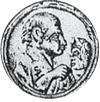Max Eisikovits, György Kurtág, György Ligeti – trei compozitori din România
Keywords:
Romania; composer;Abstract
Max Eisikovits, György Kurtág, György Ligeti – Three Composers from Romania
The place of birth has a special significance for every human being. It is an imprint of individuality; the stronger it is for creative personalities with exacerbated sensitivity. We stopped at three composers, Max Eisikovits, György Kurtág and György Ligeti, coming from the same space and time. Their musical destinies, like many others, have been marked by the tumultuous history of the 20th century. These similarities will be reflected by different manners in their creation. The three have intersected at various moments of their existence. Eisikovits was Kurtág's counterpoint teacher, and the latter was linked to Ligeti through an exceptional friendship for almost six decades. Eisikovits remained in the country, Kurtág and Ligeti went to study in Budapest, and Ligeti managed to escape from the Soviet influence of communist influence. But for all polyphony it was a way of thinking. They paid attention to the creation of the piano. Echoes of Romanian folklore are found in everybody's works. Through their roots and their creation, Eisikovits, Kurtág and Ligeti belong to the Romanian musical heritage.
References
BERSTEIN, Serge, MILZA, Pierre, 1998. Istoria Europei, vol. V. Iaşi: Institutul european.
BOULIANE, Denys, 1990. «Six Études pour piano» de György Ligeti. Revue Contrechamps „Ligeti-Kurtág” no. 12-13, p. 98-132 Paris-Lausanne: Edition L’Âge de l’Homme.
BRÂNCUȘI, Petre, 1969. Istoria muzicii românești. Compendiu. București: Editura Muzicală a Uni-unii compozitorilor din Republica Socialistă România
LIGETI, György, 2013. L’Atelier du compositeur. Genève: Éditions Contrechamp.
RRM, 2009. Interviu cu compozitorul György Kurtag. Radio România Muzical [online]. [Accesat la 6 November 2019]. Disponibil la: http://www.romania-muzical.ro/articol/interviu-cu-compozitorul-gyorgy-kurtag/236/15/2
SANDU-DEDIU, Valentina, 2014. Octave paralele. București: Editura Humanitas.
SBÂRCEA, George, 1980. Szép város Kolozsvár ... .București: Editura Kriterion.
SZŰCS, Amalia, 2017. György Ligeti. O privire în universul sonor sau matematici pe claviatură. Cluj-Napoca: Editura MediaMusica.
SZŰCS, Amalia, 2017. György Ligeti. O privire în universul sonor sau matematici pe claviatură. Cluj-Napoca: Editura MediaMusica.
TOSSER, Grégoire. La fleur, la mort, le souvenir: les Trois inscriptions anciennes op. 25. https://hal.archives-ouvertes.fr/hal-01388494/document [accesat 11.11. 2018].
VISKI, János, 1950. Négy fiatal zeneszerző. Új zenei szemple, anul I, no 6-7, p. 39-42
VOICU-ARNĂUȚOIU, Ioana Raluca, 2013. Constantin Silvestri Biografie necunoscută. București: Editura Ars Docendi.
Partituri:
EISIKOVITS, Max, 1970. Patru schițe. Cluj: Conservatorul de Muzică „G. Dima”.
EISIKOVITS, Max, 1983. Niggun. Budapest: Editio Musica.
EISIKOVITS, Max, 1983. Rondo sur des chansons chassidiques de Maramureș. Budapest: Editio Musica.
KURTÁG, György, 1979-2003. Játékok vol. I-VII. Budapest: Editio Musica.
LIGETI, György, 1967. Volumina. Leipzig: Editura Peters.
LIGETI, György, 1995. Musica ricercata. Mainz: Edition Schott.
LIGETI, György, 1997. Zwei Etüden für Orgel. Mainz: Edition Schott.
Downloads
Published
How to Cite
Issue
Section
License

This work is licensed under a Creative Commons Attribution 4.0 International License.
CC-BY permits any use, reproduction, distribution, self-archiving and citation of the work as long as the authors are credited. The complete bibliographical data of Symbolon Journal must also be indicated, which you can find in the How to cite section on this page. If possible, please also place a link leading to the original publication.
Copyright of the paper belongs to the author(s).




